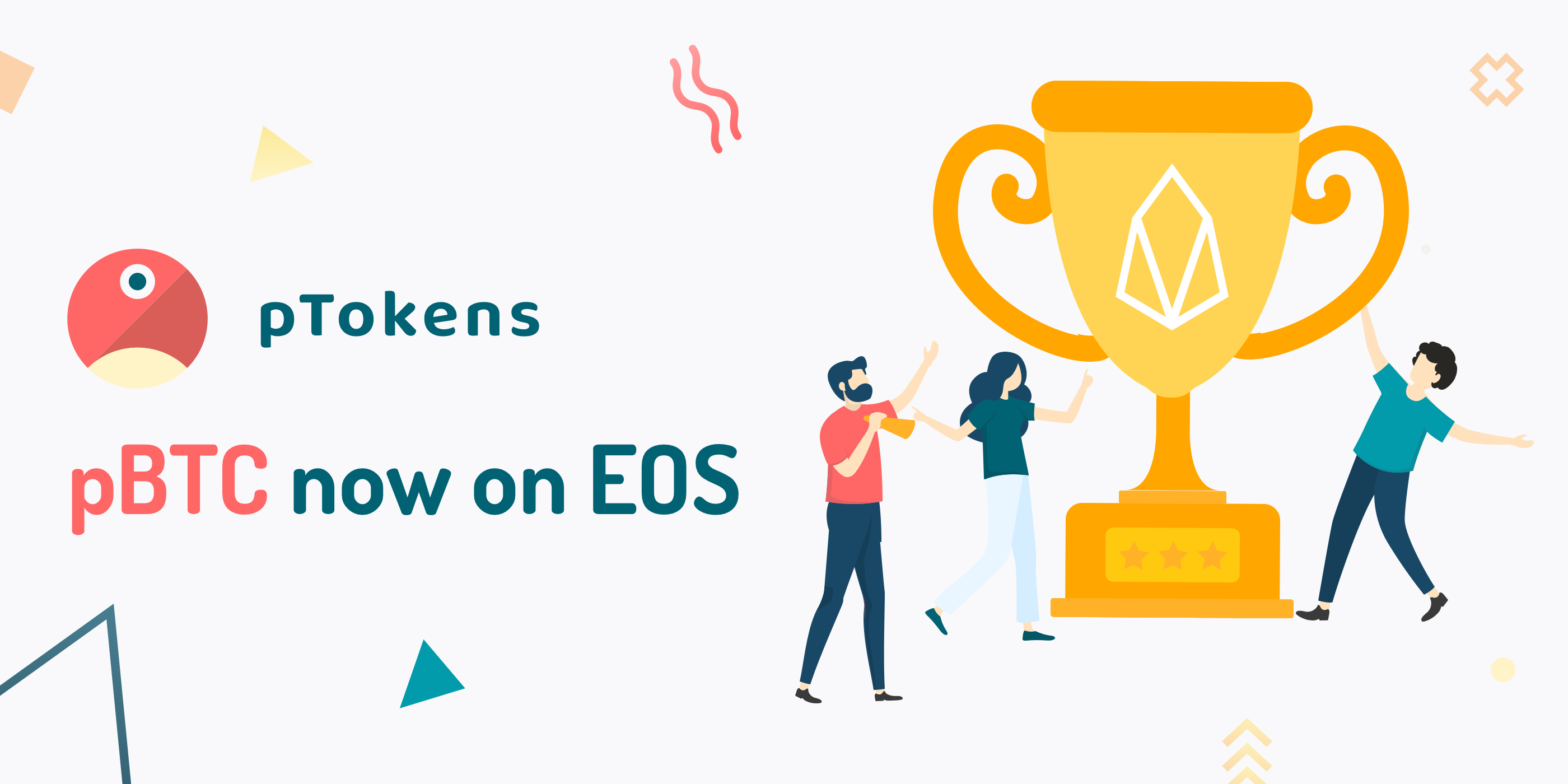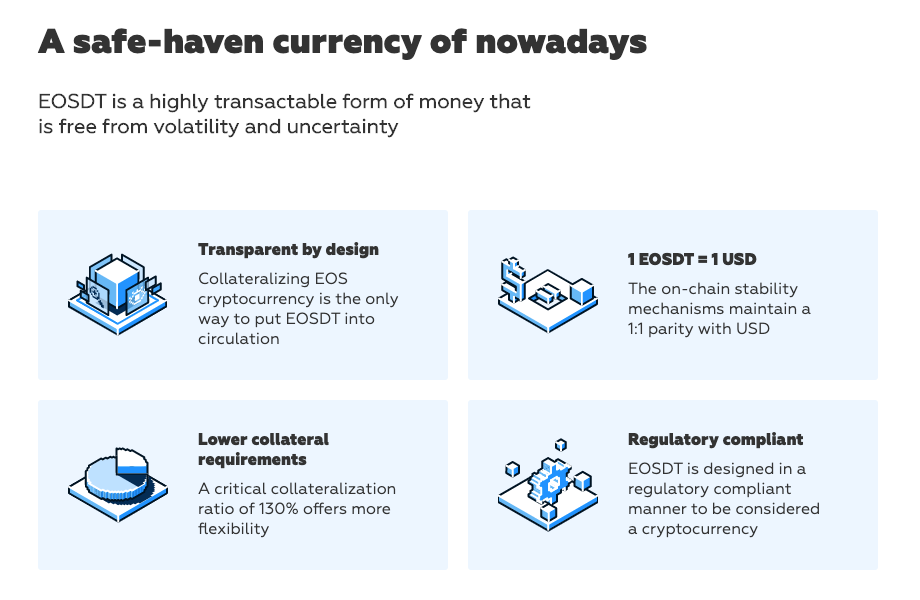
译文/Translated:
之前,我们已经成功在以太坊网络上推出pBTC,今天我们发布对EOS的互操作解决方案,这也是行业内第一个把比特币连接到EOS的网桥。
pBTC现在已经兼容EOS,所以比特币的持有人可以在整个EOS生态,包括所有的DApp上,使用自己的比特币。
本代币和比特币1:1挂钩,所以用户可以自己生成pBTC,然后就可以在马上在EOS的 DeFi平台上使用。这样的“挂钩”系统让你能把比特币存起来,而不需要出售或者交易该比特币。你可以在任何时候“解绑”或赎回比特币,把原来存进去的比特币提取出来。
在EOS上启动pBTC是由Cointelegraph主导的。我们的创办人Thomas曾经说过,pTokens的互操作性“对这场运动至关重要,因为流动性是帮助DeFi实现其真正价值的催化剂。”
在Cointelegraph阅读EOS上启动pBTC的报道。
它将如何改变游戏规则
EOS是区块链网络的领导者,其原生加密货币按照市值排名前十。EOS背后的开发团队承诺要完全取消交易费用,实现每秒百万笔交易、完成规模化。
因为关注规模化,EOS才能承受最近的市场低迷。区块链“基础架构特殊,因此对并行交易并不敏感。”按照现在的设计模式,它的贷款容量每秒可以处理250起交易,这“可能可以被扩展到每秒4,000次。”
EOS还有一个高速发展的DeFi生态,现在它也在逐渐实现其推出商业规模DApp的目标。
然而,DeFi Prime认为,以太坊的DeFi生态更加先进,EOS现还跟在以太坊后头。相比以太坊的209个项目,它只能列出22个EOS项目。
此外,虽然EOS持有人和开发者从该生态的快速发展中获益,但是它还在把非EOS用户拒之门外。所以,流动性停滞,实验和社区发展的机会也就随之减少。
现在的去中心化应用应该像乐高一样,能够互操作和互补,这样整个DeFi行业才能发展。这就是pTokens取得的成就——直观和规模化的互操作,实现不同区块链中的流动性。这种跨链流动性会成为DeFi应用的催化剂。
把EOS DeFi生态和比特币无可匹敌的流动性结合起来将成为去中心化金融的发电厂。

DeFi DApp能从中获得什么好处
pTokens打破了区块链之间的壁垒,实现DApp的相互操作。这样,它们就欢迎整个崭新的区块链社区探索自己、和自己交互,以此扩大了自己的可用性和访问性,也就“释放”了加密货币及其代币的流动性。
一般我们要求去中心化交易所(DEX)集成整个新的区块链系统,从而提供跨链转换。pTokens连接了整个中心化和去中心化世界,对于用户来说,不同区块链资产间的转换因此变得更顺利,也就为做市商创造了新机遇。
很快,所有形式的数字资产都将以pToken的形式,无缝地在区块链间移动。以太坊的持有者可以探索EOS区块链,反之亦然。pToken系统提供了一个额外的功能,让pBTC能够在以太坊和EOS区块链中移动,加强这些DeFi生态间的联系。
这样的跨链互操作性让DeFi成为强大、多样和有竞争力的生态,能够匹敌传统金融业。
它和以太坊上的pBTC有什么差异呢?
因为区块链基础架构运行原理不同,以太坊和EOS有不同的代币标准。
以太坊处理代币的方法是通过智能合约。同样,EOS上的代币也是基于eosio.token智能合约。这些EOS智能合约会提给你提供最大供给、给账户发代币和账号间代币转账,这样你就可以创建自己的代币。
EOS代币本身也是以令牌的形式发性的。你可以点击这里了解EOS代币是如何生成的。

利用用户DApp创建自己的pBTC– dapp.ptokens.io
比特币支持
实现比特币和EOS互操作之后,我们就可以把比特币作为如EOSDT之类的稳定币的抵押头寸。
根据Equilibrium 的说法,EOSDT是一个去中心化的、由EOS支持的稳定币,它和美元挂钩。这个领先的DeFi项目正在EOSDT上集成pTokens解决方法,而EOSDT已经包含了约1000万美元的抵押价值(所有基于EOS的DApp中最高的一个)。

现在的市场滑坡已经导致了一些前所未有的事件—如MakerDAO债务拍卖问题—我们需要新的解决方案保证数字资产的稳定抵押。
EOSDT很快会升级自己的单一抵押代币模式,实现由pBTC支持的多抵押模式。这不单单会带来流量,还会让它们的抵押头寸更稳定,因为它会有EOS和BTC双重保障。
Equilibrium的CEO和创办人Alex Melikhov说,团队”对集成pBTC感到非常高兴,因为它为我们的用户创造了更多用例,这样,客户可以充分利用自己的加密货币组合。DeFi一直等着能够找到一个可靠的方法抵押比特币,现在这终于成为现实。“
Equilibrium的主要目标是提供无缝的用户体验。它们把pTokens解决方案和网页界面深入地集成起来,这样一来,把比特币当作抵押品就像实现两个区块链交易一样简单了——一个是储存比特币,另一个是赎回EOSDT。
原文/Original:
Following the successful launch of pBTC on the Ethereum network, today we are releasing our interoperability solution for EOS, making it the first Bitcoin to EOS bridge industry-wide.
pBTC is now EOS-compatible, so Bitcoin holders can use their BTC throughout the entire EOS ecosystem, including all DApps.
This unique token is pegged 1:1 with Bitcoin, so users simply mint their own pBTC and can begin using it with EOS DeFi platforms straight away. This “peg-in” system allows you to deposit your BTC for safekeeping, without having to sell or trade your Bitcoin. You can then “peg-out” or redeem your BTC any time you like, withdrawing the originally deposited amount.
The launch of pBTC on EOS was covered by Cointelegraph. Our founder Thomas was quoted as saying, pTokens interoperability “is vital for the movement, as liquidity is the catalyst which will help DeFi reach its true potential.”
Read about the pBTC on EOS launch in Cointelegraph.
How this changes the game
EOS is a leading blockchain network with its native cryptocurrency in the top ten by market cap. The development team behind EOS has promised to completely remove transaction fees and achieve scalability that can handle millions of transactions per second!
This focus on scalability has helped EOS weather the industry’s recent market downturns. The blockchain is “not as sensitive to a rise in simultaneous transactions due to its architectural specifics”. Its current design can handle a bandwidth capacity of 250 transactions per second, which can “potentially be scaled to 4,000”.
EOS has a fast-growing DeFi ecosystem and is on course to achieve their goal of hosting commercial-scale DApps.
However, according to DeFi Prime, EOS is still playing catch up to Ethereum’s more evolved DeFi ecosystem. It lists 22 EOS projects, compared to Ethereum’s 209.
And while EOS holders and developers are benefitting from the ecosystem’s rapid development, it still locks out non-EOS users from participating. As a result, liquidity is siloed and there is a lost opportunity for experimentation and community growth.
Decentralized applications today need to interoperate and complement each other like lego blocks so that the entire DeFi industry can scale. This is what pTokens achieve — an intuitive and scalable level of interoperability, enabling liquidity to flow across different blockchains. This cross-chain liquidity will be the catalyst that drives DeFi adoption.
Merging the EOS DeFi ecosystem with Bitcoin’s unparalleled liquidity could create a powerhouse of decentralized finance.

What do DeFi DApps get out of it?
pTokens help DApps become composable by breaking down their own blockchain’s walls. This maximises their usability and accessibility as they welcome entirely new blockchain communities to explore and interact with them, and “unchain” the liquidity of cryptocurrencies and tokens they bring.
Decentralized exchanges (DEX) are typically required to integrate entirely new blockchain systems in order to provide cross-chain conversions. pTokens connect the centralized and decentralized worlds, making the switch between different blockchain assets smooth for users and creating new opportunities for market makers.
Soon all kinds of digital assets will move seamlessly from one blockchain to another in the form of pTokens. ETH holders will also be able to explore the EOS blockchain, and vice versa. The pTokens system offers an extra feature which enables pBTC to be moved between the Ethereum and EOS blockchains, making the connection between these DeFi ecosystems even stronger.
It’s this cross-chain composability that will enable DeFi to become a strong, diverse and competitive ecosystem that rivals traditional finance.
How is it different to pBTC on Ethereum?
Because of how each blockchain infrastructure works, Ethereum and EOS follow different token specifications.
The way tokens are handled on Ethereum is via smart contracts. Similarly, tokens on EOS are based on the eosio.token smart contract. These EOS smart contracts allow you to create your own token by providing maximum supply, issue tokens to an account and transfer tokens between accounts.
The EOS token itself is issued in the form of a token. You can check out how EOS tokens are made here.

Mint your own pBTC using the custom DApp — dapp.ptokens.io
Backed by bitcoin
By making Bitcoin EOS-compatible, we’re also able to introduce Bitcoin as a collateral position for stablecoins like EOSDT.
EOSDT by Equilibrium is a decentralized, EOS-backed stablecoin pegged to the US dollar. This leading DeFi project is integrating the pTokens solution with EOSDT, which already has approximately $ 10 Million locked in its collateral value (the most of all EOS-based DApps).

With current market falls leading to unprecedented events — such as the MakerDAO debt auction — new solutions are needed to guarantee the stable collateralization of digital assets.
EOSDT will soon upgrade their single collateral token model to a multi-collateral version additionally backed by pBTC. This brings not only more liquidity, but makes their collateral position far more stable, as it is backed by both EOS and BTC.
Alex Melikhov, CEO and founder of Equilibrium, said the team is “excited about the pBTC integration because it creates more use cases for our users, who can now get the most out of their crypto portfolio. DeFi has been most waiting for a trustworthy way to collateralise Bitcoin and now it has become a reality.”
Equilibrium’s main goal is to provide a seamless user experience. Their deep integration of pTokens’ solution into their web interface means that providing Bitcoin as collateral is as easy as sending just two blockchain transactions — one is to deposit Bitcoin and another to redeem EOSDT.
原文链接/Original URL: